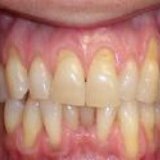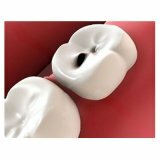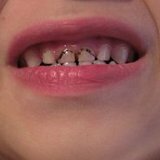Surgical treatment of gum recessions

Specialists, implementing the treatment of gums, identify three types of defects, based on the causes: traumatic, physiological and symptomatic. By the nature of the course of the disease, generalized, localized and systemic forms of diseases are isolated.
Methods of treatment
Surgical treatment of gum recession should solve two problems: to close the naked root and restore the contour of the gum. There are several options for the solution:
- The treatment of gum recession by the method from Grupe and Warren involves the use of a lateral flap or as it is also called a "flap on the leg".The sheer plus of this method is the aesthetic effect, since complete coincidence in color is achieved. Disadvantages: it is used only for localized defects and in donor areas, because of deep surgical intervention at the time of tissue sampling, recession may develop, albeit to an insignificant extent.
- Surgical treatment of the gums may also occur by coronary movement of the trapezoidal gingival flap onto the affected area. This method of treatment can already be used for localized lesions, and for widely spread( generalized) defects. By using the material from the gums, in this case, a good aesthetic result is obtained, as in the first method, but the sites from which the tissue is taken are less injured.
- With one more option, a free gingival flap can be used as a transplant. Most often in this capacity is a fragment of the mucosa from the hard palate. Minuses of this method are low implant engraftment, soreness and long discomfort at the site of tissue sampling, a low aesthetic effect due to differences in shades. Most often this method is used, performing gum treatment outside the smile zone.
- Surgical treatment of gums by the following method is a successful combination of the two previous ones: a flap taken from the gums is attached to it, but the mucous membrane of the hard palate is used as connective tissue. Thus, color matching is achieved, soreness of tissue sampling from the hard palate decreases, and even smaller damages are applied to the tissues at the site of the flap.
- Another approach involves the restoration of tissues in the place of recession of the gums. Treatment in this case is aimed at stimulating the regeneration of tissues by the introduction of separation membranes( resorbable / non-resorbable).
- The undoubted advantage of this method is the non-balancing of other parts of the mucosa, but the treatment in this case requires constant monitoring by the doctor to exclude exposure of the rigid membrane and, consequently, re-infection of this site. The second disadvantage of the method is the need for repeated surgical intervention to remove the non-resorbable membrane. It is not necessary to remove the resorbable membrane by conducting a second operation, but unfortunately, the effectiveness of its use is much lower.
- Another popular method is applying applications of protein elements that make up the enamel matrix to the place of gum recessions. Treatment in this case stimulates natural regeneration using materials from applications. The possibilities of natural regeneration of the human body are quite large, but a catalyst is required. Amelogenin was such a catalyst. This is the main part of the protein elements of the enamel matrix - with the natural development of the tooth, it participates in the formation of enamel, and in building the root of the tooth. When the enamel matrix is applied to the tooth germ begins the natural formation of cell-free cement and the regeneration of the parodontal tissues. The conducted studies confirm the complete restoration of tissues.



